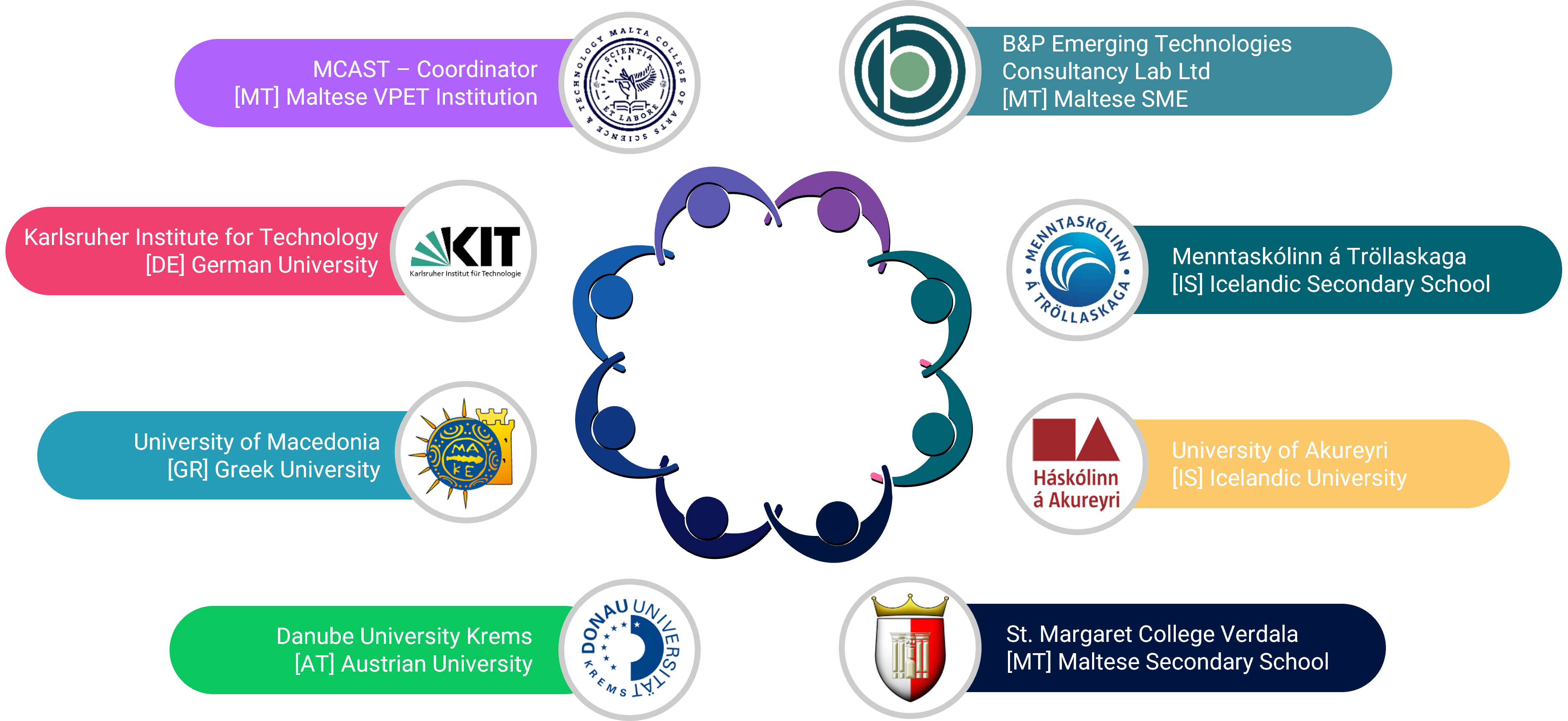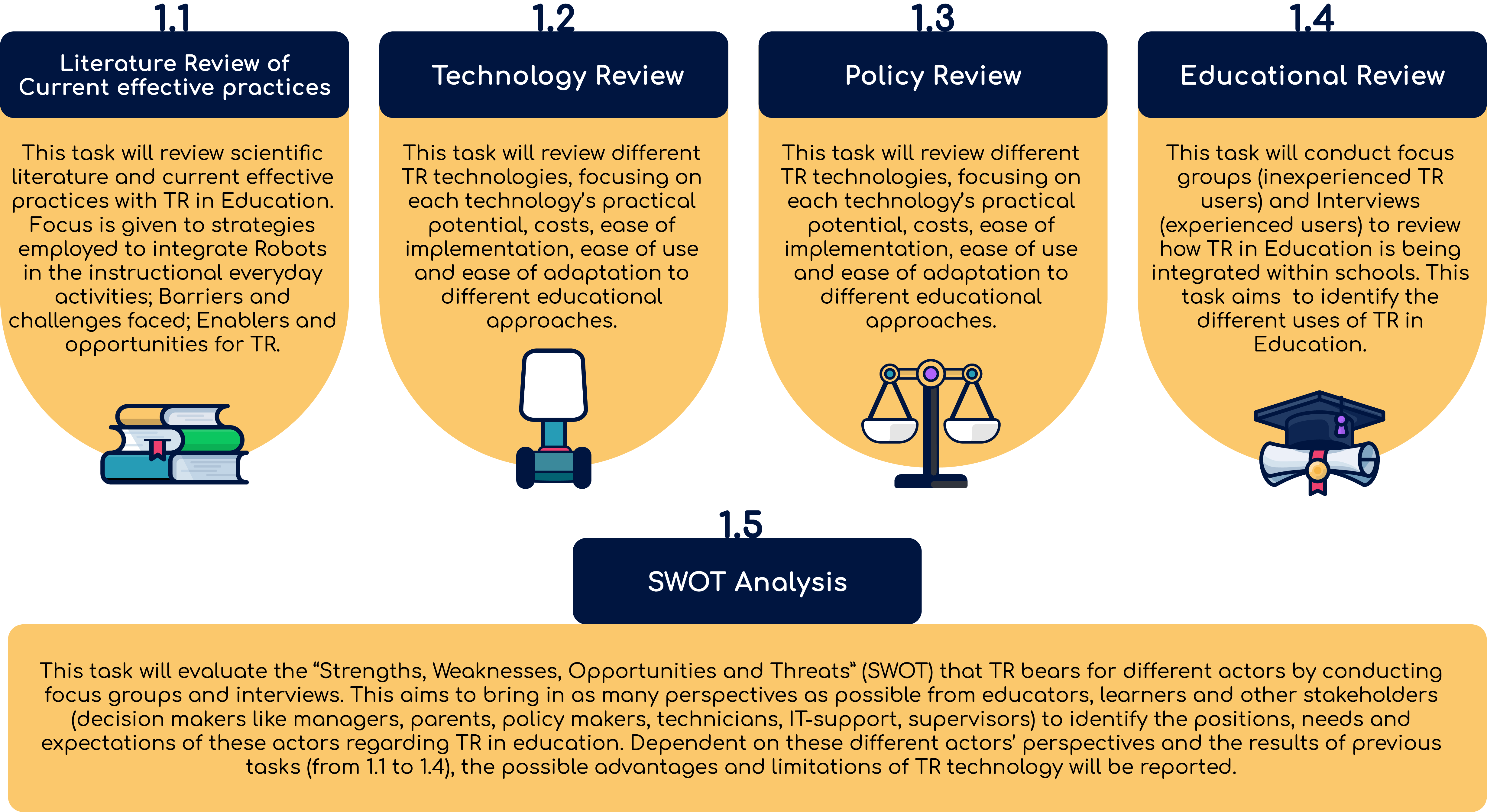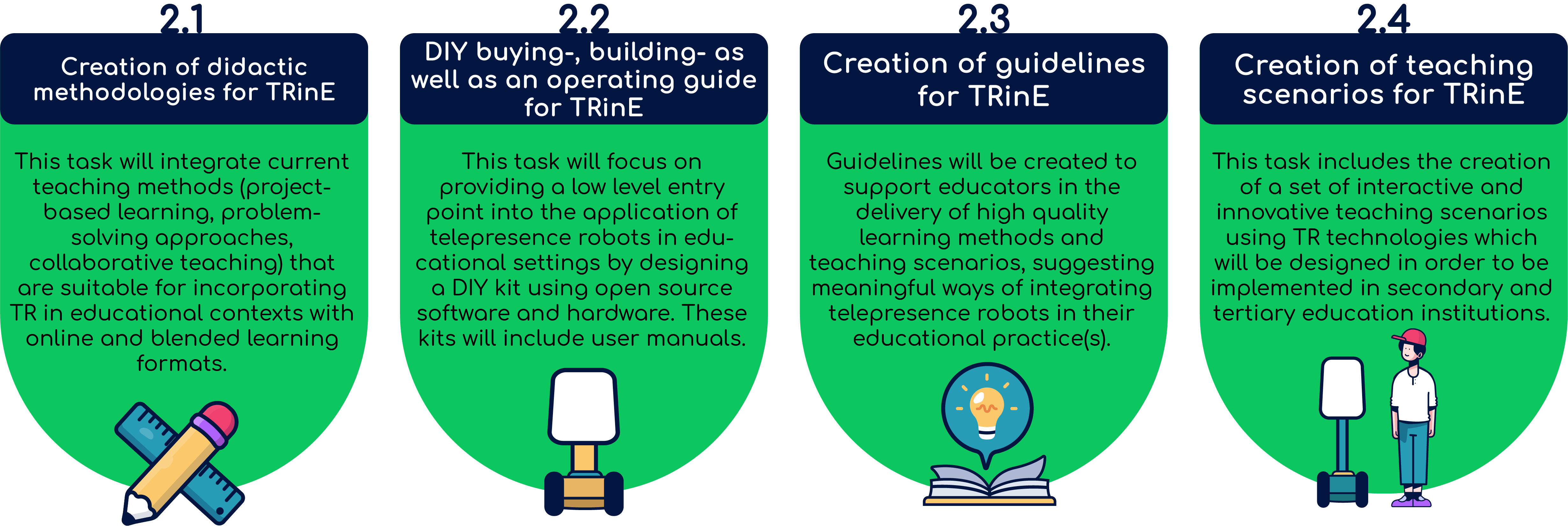TRinE – a detailed project overview
In the digital education of the future, there is a vision of seamless virtual and physical access for every educator, student and parent, at home and school. Among the increasing number of available education technology tools, the use of telepresence robots (TR) has particular potential. TR are mobile remote-controlled devices that represent the remote user via video and audio. TR can compensate for the lack of mobility of students for various reasons, such as distant residency, bad weather conditions, disabilities or illness and force majeure conditions such as epidemics. TR enables the student to be present virtually in a social environment, where they can take an active part in the class on a peer-to-peer basis. The technology also enables distant educators from remote areas or other countries to be present in a class anywhere in the world. Compared to common teleteaching methods such as video conferencing solutions, the advantages lie in the possibility of actively controlling the robot and thus also occupying physical space in the remote location. TRs thus not only enhance the feeling of social presence but also enable interactions with the environment, that are otherwise impossible.
The Erasmus+ project “TRinE – Telepresence Robots in Education” (Project Reference: 2020-1-MT01-KA227-SCH-092408) addresses the use of Telepresence Robots in educational institutions at upper secondary and higher education levels, such as in classrooms and other (e-)learning settings. In the project, we deal with the question of how the education sector can benefit from this technology, what challenges we face, and what projects and research already exist in this area. On this platform, we collect our findings and make them accessible to educational institutions, parents, students, researchers and anyone interested in TR technology.
The TRinE consortium
A better understanding of TR and its application in educational settings can be gained from the very few educational institutions in which TR is already a part of everyday life. Amongst them are two Icelandic institutions, the University of Akureyri, which implemented TR already in 2016, and the upper secondary school Menntaskólinn á Tröllaskaga, where the technology is used in secondary education. The project TRinE combines these institutions’ rare practical expertise with TR in education with the respective expertise of Danube University Krems, Center for Applied Game Studies (game studies, media education), University of Macedonia (e-learning methodologies), Karlsruhe Institute of Technology (virtual presence), B&P Emerging Technologies Consultancy Lab (emerging technology) and St. Margaret College Verdala Secondary (school, teaching). The Malta College of Arts, Science and Technology (Educational Technology) acts as the project lead.

This composition of the consortium makes it possible to address the challenges and potentials of TR in education, to develop new innovative didactical methods and approaches and make this knowledge accessible to educators, students, parents and other stakeholders. The overall goal is to prepare these target groups for the broad adaptation of TR-based teleteaching practices in educational settings.
Project Structure
The project is concerned with the use of telepresence robots in educational institutions at the upper secondary and higher education levels. Throughout the lifetime of TRinE, the team aims to generate support material for prospective TR users:
1. TRinE Decision Support Materials
The Decision Support Materials will be aimed at providing prospective educational institutions, teachers and students who intend to uptake this innovative education technology the necessary decision support materials to draw on, and maximize the potential of ‘on site’ learning via the use of telepresence robots (TR). Five distinct reviews will be undertaken to provide an exhaustive overview of TR from different perspectives, ensuring that all involved stakeholders are provided insight before and during the uptake of such innovative technology. The TRinE decision support materials are outlined in the below image:

2. Didactic Framework for TRinE
The project will also focus on developing a didactic framework aimed at providing educational institutions which already employ TR with a set of contemporary teaching and learning methods that can be implemented in educational practice. Latest didactic methods and interactive teaching scenarios will be investigated and piloted in secondary (Menntaskólinn á Tröllaskaga, SMC Verdala) and tertiary education institutions (UNKA, DUK, MCAST and KIT). The TRinE didactic framework is outlined in the below image:

3. TRinE Plattform and Toolkit
The project will further develop this online toolkit (www.trine-platform.com) focused on propagating the potential benefits of using Telepresence Robots in Education (TRinE Toolkit). This online toolkit will act as a platform for the dissemination of the results and material generated from the TRinE decision support materials, the TRinE guidelines for the implementation of TR in education and the TRinE didactic framework discussed above. The published material will be integrated into an interactive guidebook on the online toolkit to create an integrated and seamless experience when navigating the material. While the content applies to educational settings in general, the main focus will be on upper secondary school and the higher education level.
The TRinE team will also propose a Technology Acceptance Model (TAM), which in contrast to current literature adaptations, will focus on the feasibility and suitability of adopting TR within education. The TAM model will investigate the technology in light of the perceived pedagogical benefits and limitations, based on social-cognitive theories. The TRinE Toolkit and TAM are outlined in the below image:

The projects’ results, apart from being disseminated on this TRinE Toolkit and social platforms, will be further disseminated during 4 multiplier events held in Iceland, Germany, Austria as well as Greece. The learning-teaching training event will take place at the telepresence innovation hub in Iceland with all partners attending including teachers from the participating schools. It is envisioned that the widespread adoption of TRinE will raise awareness of the importance of media literacy and social competencies in the context of distance education.
Credits Illustrations: Constantin Kraus
Do you have more questions about Telepresence Robots? Visit our TRinE Glossary!
